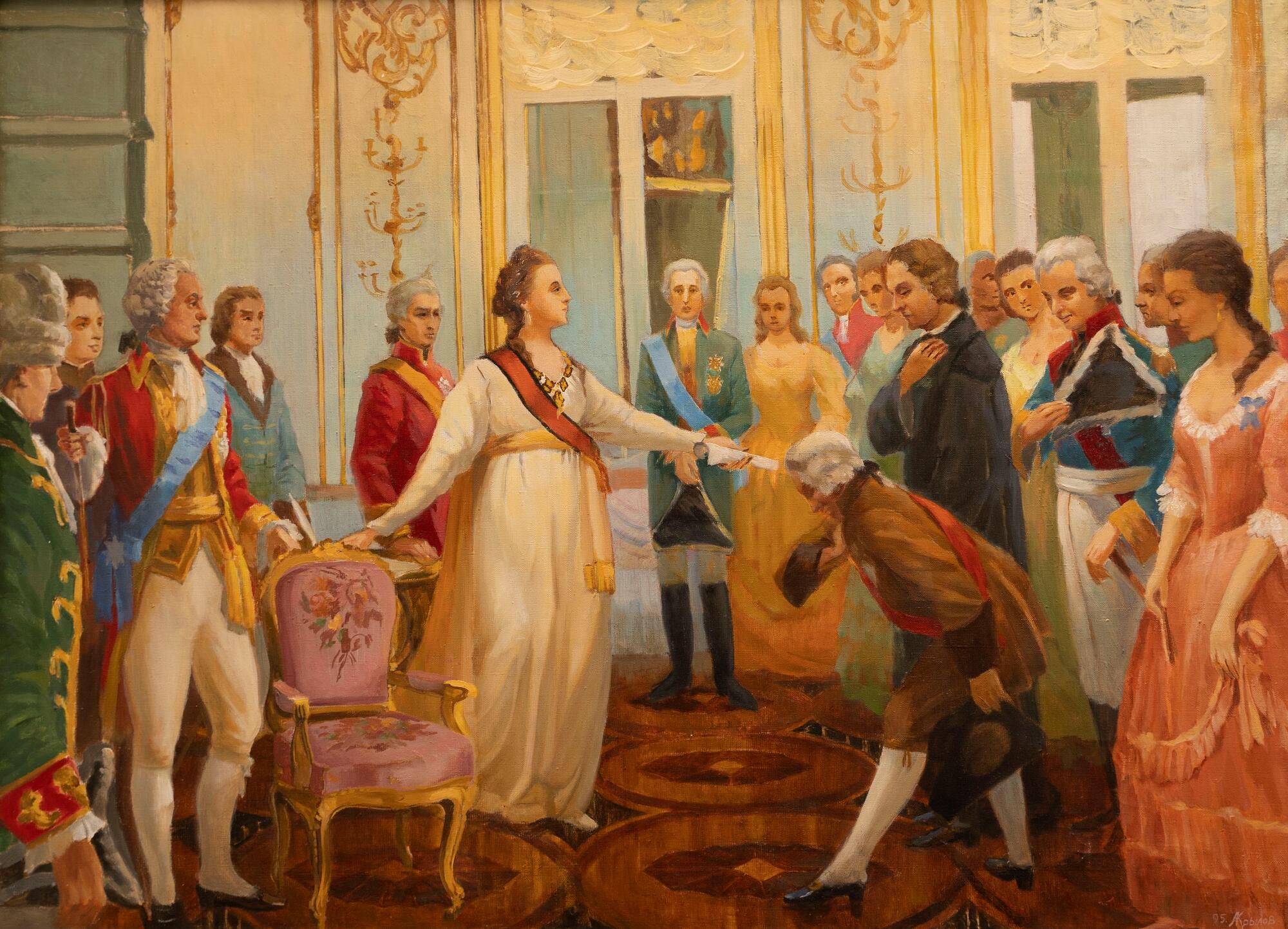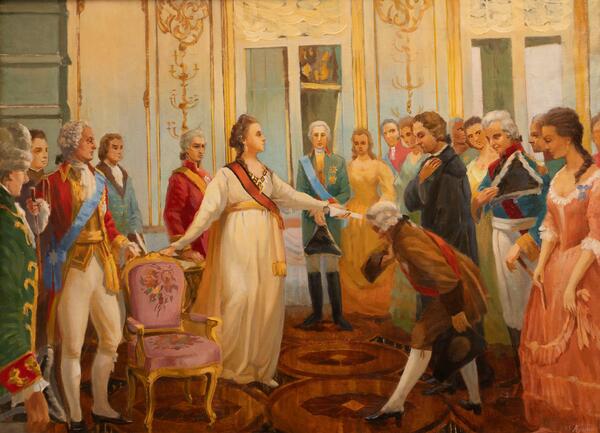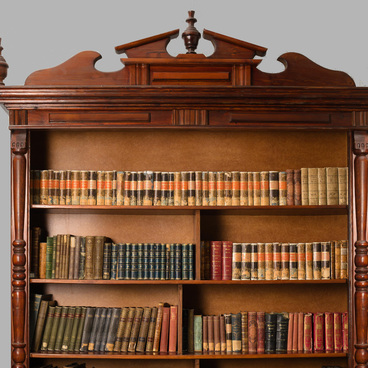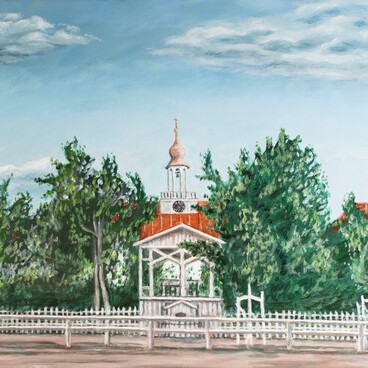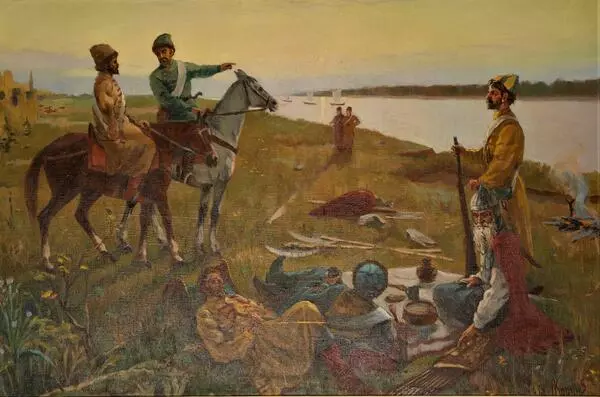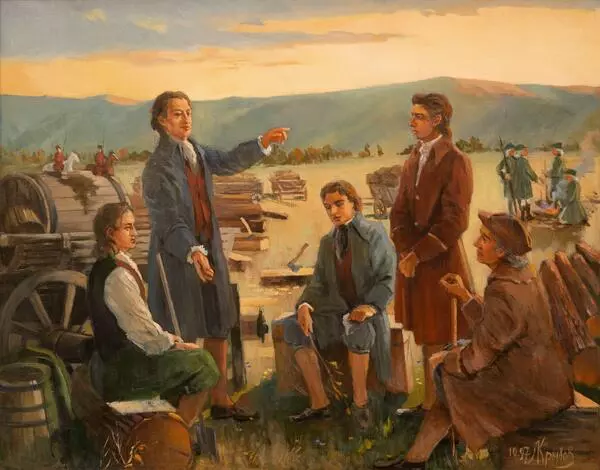In his painting Lev Krylov depicted a fateful audience for future German colonists with the Russian Empress Catherine II on December 12, 1763.
A year earlier, on December 4, 1762, Catherine the Second published manifesto on permit for foreigners of any religion to settle in the southern outskirts of Russia. This was done for the purpose of settling and economic development of empty territories in the south and southeast of Russia, as well as protecting them from the raids of nomads.
The German Hernguters were among the first to respond to this call. Hernguters are representatives of Protestantism, descendants of the so-called Czech, or Moravian, brothers.
Catherine’s courtiers, Count Zakhar Chernyshov and court counselor Friedrich von Köhler, informed the empress about the Hernguters, their hard work and high reputation in Europe.
Count Chernyshev’s story about the Hernguters aroused the Empress’s interest. It turned out that Catherine the Second had known about the Fraternal Union since childhood. Catherine, a German princess Friederike Auguste Sophie of Anhalt-Bernburg by birth, lived in her youth in the castle of Dornburg near the settlement of the Fraternal Union and heard many good things about him from her mother.
The Empress graciously expressed her desire to hold separate negotiations with the colonists. On August 5, 1763, Catherine II personally issued an order to the court councilor Köhler with the authority to invite the Brotherhood to the empire. Her message expressed the highest benevolence and mercy to the brothers, and she invited them to move to Russia.
In October of the same year, the Community Directorate asked the Russian Empress to meet the representatives of the Fraternal Union for further work. Their main task was to resolve issues of faith and the possibility of missionary work among the non-Christian peoples of the Russian Empire.
Delegates Paul Layritz and Johann Loretz, together with Friedrich Köhler, arrived in St. Petersburg on December 7, 1763. Already on December 9, the Empress, through the mediation of Alexander Glebov and Grigory Orlov, personally met with Kohler in Tsarskoye Selo and asked him the main question - are the Herguter brothers going to reform the dominant Orthodox Church. To which Koehler replied:
A year earlier, on December 4, 1762, Catherine the Second published manifesto on permit for foreigners of any religion to settle in the southern outskirts of Russia. This was done for the purpose of settling and economic development of empty territories in the south and southeast of Russia, as well as protecting them from the raids of nomads.
The German Hernguters were among the first to respond to this call. Hernguters are representatives of Protestantism, descendants of the so-called Czech, or Moravian, brothers.
Catherine’s courtiers, Count Zakhar Chernyshov and court counselor Friedrich von Köhler, informed the empress about the Hernguters, their hard work and high reputation in Europe.
Count Chernyshev’s story about the Hernguters aroused the Empress’s interest. It turned out that Catherine the Second had known about the Fraternal Union since childhood. Catherine, a German princess Friederike Auguste Sophie of Anhalt-Bernburg by birth, lived in her youth in the castle of Dornburg near the settlement of the Fraternal Union and heard many good things about him from her mother.
The Empress graciously expressed her desire to hold separate negotiations with the colonists. On August 5, 1763, Catherine II personally issued an order to the court councilor Köhler with the authority to invite the Brotherhood to the empire. Her message expressed the highest benevolence and mercy to the brothers, and she invited them to move to Russia.
In October of the same year, the Community Directorate asked the Russian Empress to meet the representatives of the Fraternal Union for further work. Their main task was to resolve issues of faith and the possibility of missionary work among the non-Christian peoples of the Russian Empire.
Delegates Paul Layritz and Johann Loretz, together with Friedrich Köhler, arrived in St. Petersburg on December 7, 1763. Already on December 9, the Empress, through the mediation of Alexander Glebov and Grigory Orlov, personally met with Kohler in Tsarskoye Selo and asked him the main question - are the Herguter brothers going to reform the dominant Orthodox Church. To which Koehler replied:
